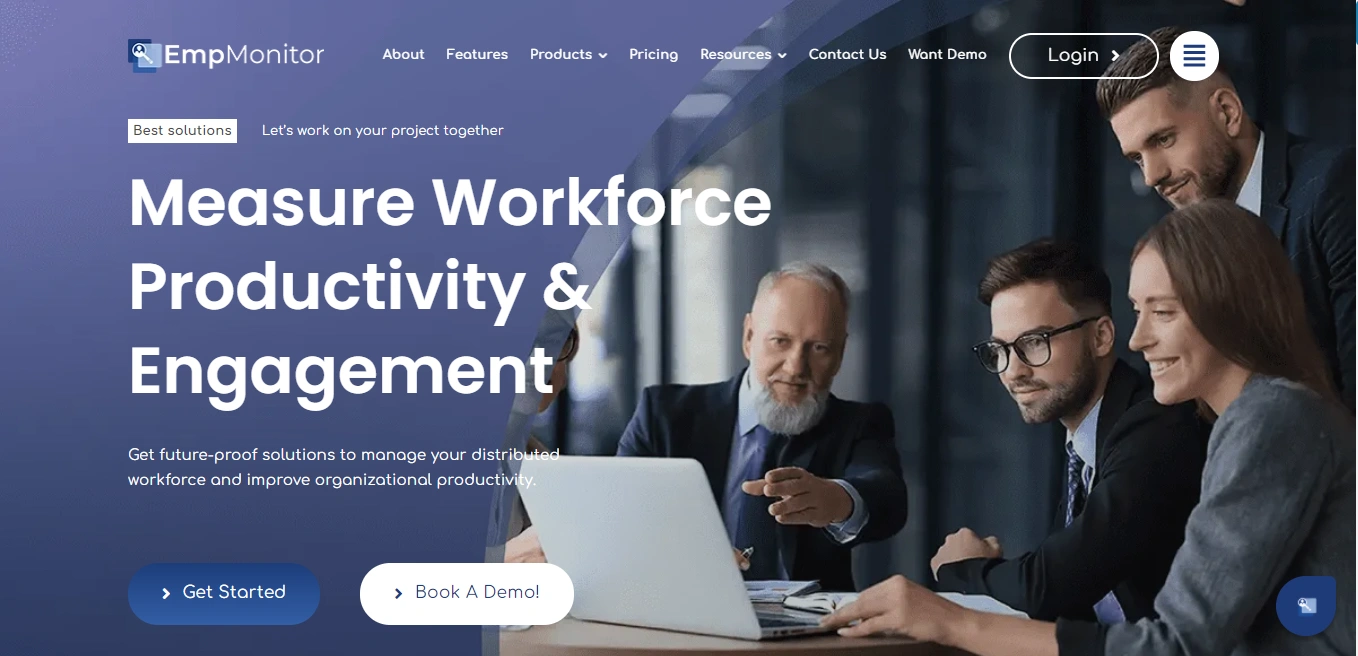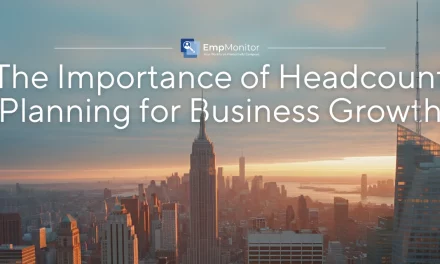Over the past few years, remote and hybrid work has become popular. But with this change, many employers started asking the same question: Are our employees working?
To answer that, workplace tracking tools started gaining popularity. What used to be simple log-in records has now turned into detailed monitoring—tracking screen time, app usage, keystrokes, and sometimes even taking screenshots.
For companies, it’s about improving productivity and accountability. But for employees, it often feels invasive, like they are being watched every second.
As we move deeper into 2025, the question is not whether tracking works. It’s whether the benefits outweigh the cost to employee trust, morale, and mental well-being.
In this blog, we will explore how workplace tracking works, what the latest research says, and what employers should consider before going all in.
In a hurry? Listen to the blog instead!
What Is Workplace Tracking?
Employee surveillance in the workplace is exactly what it sounds like: monitoring what employees do during work hours. But in 2025, it’s gone far beyond just checking attendance or login times.
Many companies use digital tools that track everything from time spent on apps to keyboard activity, mouse movements, websites visited, and even idle time. Some tools take regular screenshots, track the location of field employees, or use AI to flag behavior patterns. In some extreme cases, some systems analyze tone in emails or monitor webcam feeds for attention levels. Yes, it’s that advanced.
There are three main types of workplace surveillance:
- Passive tracking: Tools run silently in the background, recording data like work hours, app usage, or site visits.
- Active tracking: Requires employee input or interaction, like checking in or logging breaks.
- Algorithmic management: This is where AI starts taking over—assigning tasks, ranking productivity, or even helping decide promotions or warnings based on performance data.
The adoption is growing fast, especially in IT companies, startups, and BPOs across India. With a young workforce and rising competition, many employers see tracking as a way to better manage. But it also raises real concerns about boundaries, privacy, and how much is too much.
Because while data can show what someone did, it does not always reflect how well they did it, or what they sacrificed to meet expectations.
The Promised Benefits
For a lot of companies, workplace surveillance isn’t just about keeping an eye on employees; it’s about knowing what is getting done. With remote and hybrid teams, it can be hard to tell who’s working on what.
The main goal? Better productivity. With tools like EmpMonitor, employers can see how much time is spent on tasks, which apps are being used the most, and where time might be wasted. It gives managers real-time visibility without having to constantly check in.
Other benefits often highlighted by businesses include:
- Time management: Helps teams stay focused and reduces distractions.
- Performance insights: Makes it easier to identify top performers or those who may need support.
- Compliance & security: Particularly in industries like finance, BPO, or healthcare, tracking can help meet legal or data protection standards.
- Workforce planning: The data can reveal trends that help with hiring decisions, project allocation, and even identifying burnout early.
Many companies claim that with the right use, tracking builds a more efficient, workforce integration , especially when teams are working from different cities or time zones.
And yes, there’s some truth to that.
But the question is: Does boosting productivity always mean creating a better workplace?
The answer isn’t so simple, and as we will see next, tracking can also bring some serious downsides that are hard to ignore.
How Tracking Affects Employee Morale?
While companies may see workplace tracking as a smart move, it does not always feel that way on the other side. For many employees, constant monitoring feels like a lack of trust. And over time, that can quietly chip away at morale.
Studies have found that when people know they are being watched all the time, their stress levels go up. A 2024 report by the American Psychological Association showed that over 55% of monitored employees felt anxious or burned out, compared to only 40% of those who were not tracked. The difference might not seem huge at first glance, but it adds up, especially in high-pressure environments.
There’s also something called “productivity theater.” That’s when people try to look busy instead of doing meaningful work. Employees have started using mouse jigglers or keeping Slack statuses active just to avoid being flagged as “idle.” It’s not a joke, it’s a direct response to feeling micromanaged.
In Indian workplaces, where job security is already a big concern for many, the pressure is even higher. People may not speak up about the discomfort, but it doesn’t mean it’s not affecting them. Constant tracking can lead to burnout, lower job satisfaction, and even push good employees to quit.
Because at the end of the day, no one wants to feel like they’re being watched all the time, especially when they’re doing their best.
Legal & Privacy Concerns
As workplace tracking becomes more common, questions around privacy and legality are getting louder. Can employers monitor everything? Do employees have a say? The answer depends on where you are, and in many cases, the lines are still blurry.
In countries like the U.S., the laws mostly favor employers. Most companies can legally track work devices and company-provided accounts, as long as they inform employees. But there are growing concerns, especially from labor unions and privacy advocates.
In Europe, it’s a different story. Thanks to GDPR, companies must be very clear about what data they collect, why they are collecting it, and how long they will keep it. Employees must give informed consent, and excessive workplace tracking is a no-go.
In India, the concept is still evolving. While we don’t have specific laws on employee monitoring, certain parts of the IT Act and the Digital Personal Data Protection (DPDP) Act of 2023 come in. These rules say companies must get consent before collecting personal data, and they must keep that data safe. But the actual enforcement is still in the early stages, and many companies are figuring it out as they go.
The safest and smartest approach for employers?
- Be transparent.
- Get written consent.
- Monitor only what’s necessary.
- Respect boundaries between personal and professional spaces.
Because in the long run, trust matters just as much as compliance.
Also Read!
What Is Workforce Intelligence And Why Is It Important?
9 Ways To Improve Employee Productivity In The Workplace
Productivity vs Morale
Workplace tracking is meant to improve performance, but here’s the paradox: sometimes, the more you monitor, the worse things get.
Tracking tools can help teams meet deadlines, reduce distractions, and spot issues early. But they also create pressure. When employees feel like they are being watched 24/7, it affects how they work. Instead of focusing on real results, people start focusing on “looking busy.” That’s where productivity theater kicks in again, clicking around, keeping the cursor moving, or leaving tabs open just to appear active.
This kind of environment can destroy creativity. Not everything valuable shows up in a screenshot or time log. Deep thinking, problem-solving, and collaboration don’t always happen within a 9-to-5 framework. And when workplace tracking becomes too intense, employees may stop taking initiative. They play it safe, avoid risks, and just do the bare minimum.
There’s research to back this up. A study from MIT found that excessive surveillance can lead to high turnover rates—people leave not because of the workload, but because they feel constantly judged.
Gen Z and younger millennials, in particular, value autonomy and mental well-being. For them, a “monitored” workplace tracking feels outdated and even toxic.
Productivity might go up in the short term, but morale and loyalty can go down. And once trust is broken, it’s hard to rebuild. This is why organizations prefer ethical employee monitoring solutions that balance the interests of both employees and employers.
Best Employee Monitoring Software
If you are searching for a tool that balances smart workplace tracking with employee privacy, EmpMonitor is a great choice.
EmpMonitor is a powerful employee management software, and it helps businesses track productivity, manage attendance, and provide data security, all from one dashboard.
Top Features Of EmpMonitor
Time & Activity workplace Tracking: Tracks how much time employees spend on websites, apps, and specific tasks. You can even see when someone is idle or actively working.
Automatic Screenshots: Takes regular screenshots (at set intervals) so managers can get a visual report of work progress, without interrupting the workflow.
Live Screen Monitoring: Need real-time insight? You can view screens live to see what’s happening instantly.
Attendance & Shift Management: Tracks login/logout times, breaks, and work hours automatically. It also helps manage flexible shifts and remote work schedules.
Insider Threat Detection: Monitors risky activities like file sharing, USB usage, or visiting restricted websites. Sends alerts if anything unusual is detected.
Project & Task Reports: Easily assign tasks and check how much time is spent on each one. Great for understanding team productivity.
EmpMonitor is simple, detailed, and powerful. It helps companies stay on top of performance without making employees feel micromanaged—and that’s the real win.
Best Practices For Ethical Tracking
Some level of workplace tracking is here to stay. But that does not mean it has to feel invasive or controlling. The key is to use tracking transparently, ethically, and with a clear purpose.
Here are some most useful methods that smart, employee-first companies are following in 2025:
1. Be Upfront About It
Don’t track in secret. Tell your team exactly what’s being monitored and why. Whether it’s time spent on apps, project progress, or attendance, transparency builds trust.
2. Track Output, Not Activity
Instead of measuring keystrokes or screen time, focus on results. If the work is getting done well and on time, does it matter how many breaks someone takes in between?
3. Give Employees Access to Their Own Data
Many companies now let employees see the same dashboards managers do. It gives them a chance to self-reflect and adjust their habits without feeling micromanaged.
4. Avoid Personal Intrusion
Tracking should stay within the work context. Monitoring personal emails, webcams, or non-work apps crosses a line, ethically and legally.
5. Keep Communication Open
Create feedback loops. Let employees express concerns or suggest changes to the workplace tracking process. Make it a two-way street, not just a top-down policy.
6. Review Policies Regularly
Tech and privacy laws are growing. Companies need to keep reviewing and updating their workplace tracking policies to stay compliant and fair.
Final Thoughts
Workplace tracking isn’t good or bad on its own; it’s all about how it’s used. When done right, it helps teams stay focused, keeps projects on track, and supports better planning. But when it goes too far, it can create stress, reduce trust, and push people away.
The best approach? Be open, respectful, and fair. Use tracking tools like EmpMonitor to support, not spy on, your team. Focus on results, not just activity. And always remember: a motivated team will perform better than a monitored one.
In 2025, the smartest companies are not just chasing productivity; they are building workplaces where people want to work.
FAQs About Workplace Tracking In 2025
Q1. Is workplace tracking legal in India?
Yes, but it’s a bit grey. There are no direct laws about employee monitoring in India yet. However, the Digital Personal Data Protection (DPDP) Act, 2023, and the IT Act require employers to get employee consent before collecting any personal data. So, tracking is allowed as long as it’s done transparently and with consent.
Q2. Does workplace tracking mean spying on employees?
Not if it’s done ethically. Good workplace tracking is about measuring work progress and productivity, not micromanaging. The goal is to help teams perform better, not to make them feel watched 24/7.
Q3. What kind of things can employers track?
This depends on the tools used. Common things include:
- Websites and apps used
- Work hours and idle time
- Screenshots of activity
- Attendance and breaks
- File sharing and USB usage
- Some tools also offer live screen monitoring, task tracking, and threat alerts.
Q4. Does workplace tracking reduce employee trust?
It can if done the wrong way. Over-tracking or tracking without consent often leads to stress and mistrust. But when tracking is transparent, focused on work, not personal behavior, and involves employee feedback, it can improve accountability without harming trust.
Q5. What’s the best tool for employee monitoring in 2025?
EmpMonitor is one of the most trusted tools. It tracks time, productivity, tasks, and even security risks. It’s easy to use, detailed, and doesn’t make employees feel micromanaged. Plus, it supports remote and hybrid work setups well.














